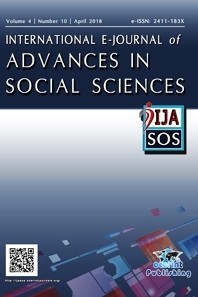
International E-Journal of Advances in Social Sciences
Yazarlar: Wu LUQİAN, Alena Ju. NİKİTİNA, Olga A. PETROVA
Konular:Sosyal Bilimler, Disiplinler Arası
DOI:10.18769/ijasos.876342
Anahtar Kelimeler:Connotation,Linguistic and cultural studies,Linguistic world-image,Proverbs,Phytonyms
Özet: The article presents the results of a comparative linguoculturological analysis of linguistic units representing the "plant" cluster in the Russian and Chinese linguistic world-image. The object of the research is proverbs with a phytonym component (with the names of trees and plants and their fruits). The relevance of this study is justified by the fact that the study and comparison of linguistic world-image of different peoples is a developing direction in linguistics because the worldview and attitude of the people, their own version of the image of the world are fixed in the semantics of words. The aim of the research is to analyze the proverbs with names of plants of the Russian and Chinese languages and to describe the features of the Russian and Chinese linguistic world-image through the prism of linguocultural studies. Since plants have been present in the life of any nation since antiquity and are an integral part of human life, it is not surprising that phytonyms are often found in phraseological units, in particular, proverbs. Phytonym components have an extremely wide associative potential, vividly reflect the peculiarities of national consciousness and the specifics of the linguistic world-image of the people as a whole; they can be international and nationally specific. The research showed that in the Russian and Chinese languages, proverbs containing components of plant names can be divided into 3 groups: 1) proverbs with a tree component (fruit and non-fruit); 2) proverbs with a cultivated plant component; 3) proverbs with an uncultivated (wild) plant component. The analysis showed that in the Russian and Chinese languages the absolute majority belongs to proverbs with a tree component, both fruit and non-fruit. The study also revealed that from a semantic point of view, a significant number of proverbs with components of plant names describe a person's character, his external and physical data, moral qualities. Semantic analysis of proverbs showed that sayings with the names of plants can have a similar image and be used in the same meaning in the languages under consideration, or they can have completely different connotations, which are due to the national specifics of culture, lifestyle, imaginative perception of the external world by both peoples.